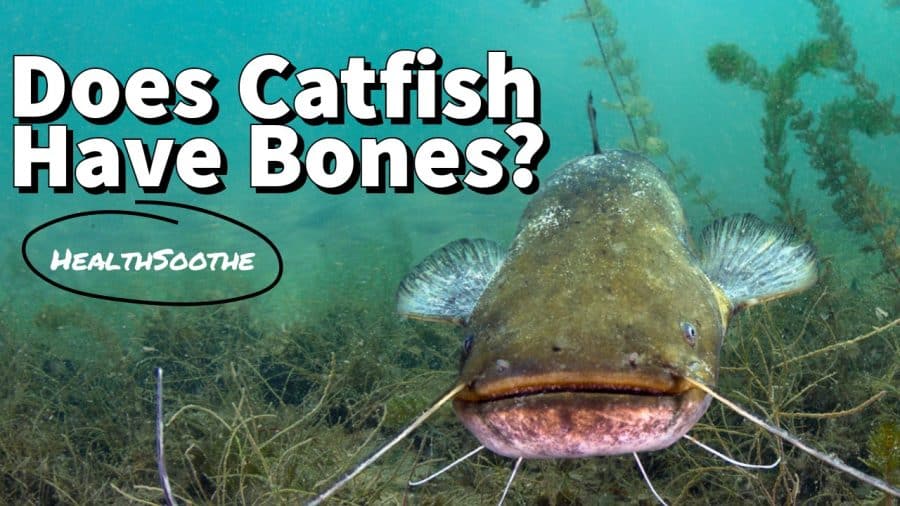Catfish, typically found in freshwater environments are a fascinating species of fish that has captured the attention of anglers and seafood enthusiasts alike.
Quick Facts About Catfish
From its distinct and mouth-watering taste to its mesmerizing appearance, catfish has become a popular dish for seafood lovers from around the world, and while some people enjoy it with bones, others prefer the boneless cuts.
However, one burning question that usually linger in the minds of some people is: does catfish have bones?
This question might sound a little bit odd but there are actually some people who are hesitant to cook the fish because they often wonder if they have bones in them or not while others do not know how to remove them properly if they do, either.
But not too worry,
In this article, we will answer all of your questions about whether or not catfish have bones and even provide you with a step-by-step guide on how to remove them properly if they do. We'll also shed more light on the health benefits of eating a catfish with it bone.

- Does Catfish Have Bones?
- Where Are Catfish Bones Located?
- Is Catfish a Bony or Cartilaginous Fish?
- Do All Species of Catfish Have Bones?
- Are Catfish Bones Dangerous? What Happens If You Eat One?
- What Are The Potential Health Benefits Of Eating Catfish With Bones?
- Step-by-Step Guide – How to Remove Catfish Bones?
- Which Fish Has the Most Bones?
- Final Verdict
Does Catfish Have Bones?
Now, let's tackle the burning question asked by various seafood enthusiasts – Does Catfish Have Bones?
The answer to the question is a resounding yes, catfish does have bones. However, their bone structure differs from that of other fish species. They possess an orderly set of bone which includes the backbone or the spine and smaller bones which is attached to the spine, quite similar to the ribs in that of humans. These bones are known to give the catfish it unique shape and look, and also aids its movement with ease under water.
While it's been clear to you that catfish does indeed have bone in them, that shouldn't stop you from having a taste of this delicious seafood as they're not necessarily harmful if consumed correctly after being prepared properly by removing any bones between its meaty part cautiously one at a time without hurting yourself or damaging your meal enjoyment experience!
Where Are Catfish Bones Located?
Most of the catfish's bones can be located in its head, spine (backbone), ribs, fins and tail. The skull houses the jawbone. Along with this sturdy jawbone, a catfish also has several small but sharp teeth.
These bones provide structural support and protection for the catfish, allowing them to navigate their freshwater environment with ease. Understanding the location of catfish bones is really important when it comes to preparing and consuming this delectable fish.
Is Catfish a Bony or Cartilaginous Fish?
Catfish is a type of fish that belongs to the order, Siluriformes. When it comes to categorizing catfish, one question that usually arises is whether or not they are bony or cartilaginous fish.
Bony fish generally have a skeleton made of bone tissue, while cartilaginous fish have a skeleton made of cartilage. So, which of this category does catfish fall under?
The answer is simply bony fish. Catfish have an internal skeleton made up of bones just like most other species of fish. The bones in their body provide them with structure and support, allowing them to move with ease in their aquatic environment.
Do All Species of Catfish Have Bones?
When it comes to the question of whether all species of catfish have bones, the answer is yes, all catfish species have bone. Although, there are over 3,000 different types of catfish in the world, and they vary greatly in terms of their anatomy, but their skeletal structure are quite similar for all.
While some fish, such as sharks and rays, have cartilaginous skeletons, catfish are classified as bony fish due to their bone structure. Whether it's the Channel Catfish, Blue Catfish, or Flathead Catfish, bones are an integral part of their physiology.
Are Catfish Bones Dangerous? What Happens If You Eat One?
The answer to this question might not be as straightforward as you may think. Catfish have many small and sharp bones scattered throughout their meat, which makes them difficult to remove completely.
However, during the cooking process, catfish bones are more likely to be one soft and easy to eat. You see, catfish bones are already somewhat weak and fragile to start with, so when we cook them in a heated pan encased in the fish meat, the heat makes them even more weaker. So, by the end of the cooking process, the catfish bones becomes very easy to break and eat.
Once these bones find their way into your stomach and don't get stuck in your throat, the acid and juices in your stomach can help break them down easily, just like they break other food you eat. After breaking them down, your body gets rid of the bones like it normally does with other food.
But at times, If you accidentally swallow a fish bone while eating catfish, the bone might just sting your throat a little bit without causing you any pain or discomfort because they're so weak and thin.
However, in some cases, some variety of species of catfish tend to have stronger bone structure which when swallowed accidentally could puncture your throat if stucked causing an injury as it passes through your digestive system. This can lead to discomfort or even infection if left untreated.

What Are The Potential Health Benefits Of Eating Catfish With Bones?
Now moving on, let's explore the several health benefits of consuming catfish with bones;
1. Consuming the bones provides us with an excellent source of calcium. This mineral is essential in maintaining healthy and strong bones, teeth, and muscles.
2. Eating catfish with bones can also help improve our digestive system's health by providing us with dietary fiber that aids digestion and prevents constipation.
3. Catfish are super rich in omega-3 fatty acids which are important in maintaining a healthy heart by reducing inflammation and improving blood flow. These beneficial fats also aid cognitive function by protecting brain cells from damage caused by aging.
4. Eating Catfish with bones may provide mental health benefits as it contains tryptophan - an amino acid that helps produce serotonin - the "feel-good" chemical responsible for mood regulation.
Step-by-Step Guide – How to Remove Catfish Bones?
Removing catfish bones can be a daunting task but it’s an important one to ensure the safety of those consuming this delicious fish.
Here is a step-by-step guide on how to remove catfish bones:
Step 1: Begin by washing your hands and the fish thoroughly with neat water.
Step 2: Place the catfish on a cutting board and use a sharp fillet knife to make an incision along the the fish's backbone from its head to its tail.
Step 3: Use pliers or tweezers to carefully pull out any visible bones from each side of the cut you made in step two. Remember to pay close attention to the area near around head, because this is where the majority of the bones are located.
Step 4: Run your fingers down both sides of the fish, feeling for any remaining small bones that may have been missed during step three. Remove these with pliers or tweezers as well.
Step 5: Once all visible and accessible bones have been removed, rinse off any blood or loose bone fragments with cold water.
With practice, removing catfish bones will become easier and quicker. Remember to always take caution when handling knives and other tools while preparing food.
Which Fish Has the Most Bones?
The title for fish having the most number of bones goes to none other than one in the Clupeidae family – American Shad (Latin name - sapidissima). American Shad has an astounding 3,000 bones - more than any other bony fish species. These bones are so tiny that they're barely noticeable when you eat them whole.
On the contrary, some species of fish have fewer or even no visible bones at all. For instance, eel is known to have extremely small spinal columns that can be difficult to find.
However, just because American Shad has more bones doesn't necessarily mean it's less edible or nutritious compared to other types of fish. As a matter of fact, it is highly valued for their meat, and is considered by many seafood lovers to be one of the most tastiest and nutritious fish meats. Fish like salmon also contain plenty of healthy fats and proteins that make them a great addition to your diet.
So, while American Shad can be a little tricky to remove the bones from, they taste really, really good! Even though it takes a bit more work, the yummy flavor of these fish makes it totally worth the extra work.
FAQ About Catfish Bones
What fish has more bones?
Final Verdict
Catfish is a popular fish that many people enjoy eating. It is a versatile fish with a unique taste and texture. While it may be concerning to some whether or not catfish has bones, the answer is clear: yes, catfish does have bones!
However, with proper preparation and cooking techniques, these small bones can easily be avoided without any harm to your health. Just remember to always check for bones before consuming any type of fish.
Catfish remains an excellent source of protein and other essential nutrients that should definitely be added to your diet if you haven't done so already! So go ahead and enjoy this delicious delicacy without worrying about its tiny little bones!

My name is Iyanu Kolawole, I’m a professional content writer and web developer. I have always been passionate about writing and developing my coding skills. I started my career as a content writer and have written for several companies and brands. I am also a skilled web developer and have built several websites for businesses and individuals.I am a hardworking individual who is always looking to improve my skills. I am constantly striving to learn new things and to be the best at what I do. I am also a very friendly person and enjoy working with others.
The content is intended to augment, not replace, information provided by your clinician. It is not intended nor implied to be a substitute for professional medical advice. Reading this information does not create or replace a doctor-patient relationship or consultation. If required, please contact your doctor or other health care provider to assist you to interpret any of this information, or in applying the information to your individual needs.


